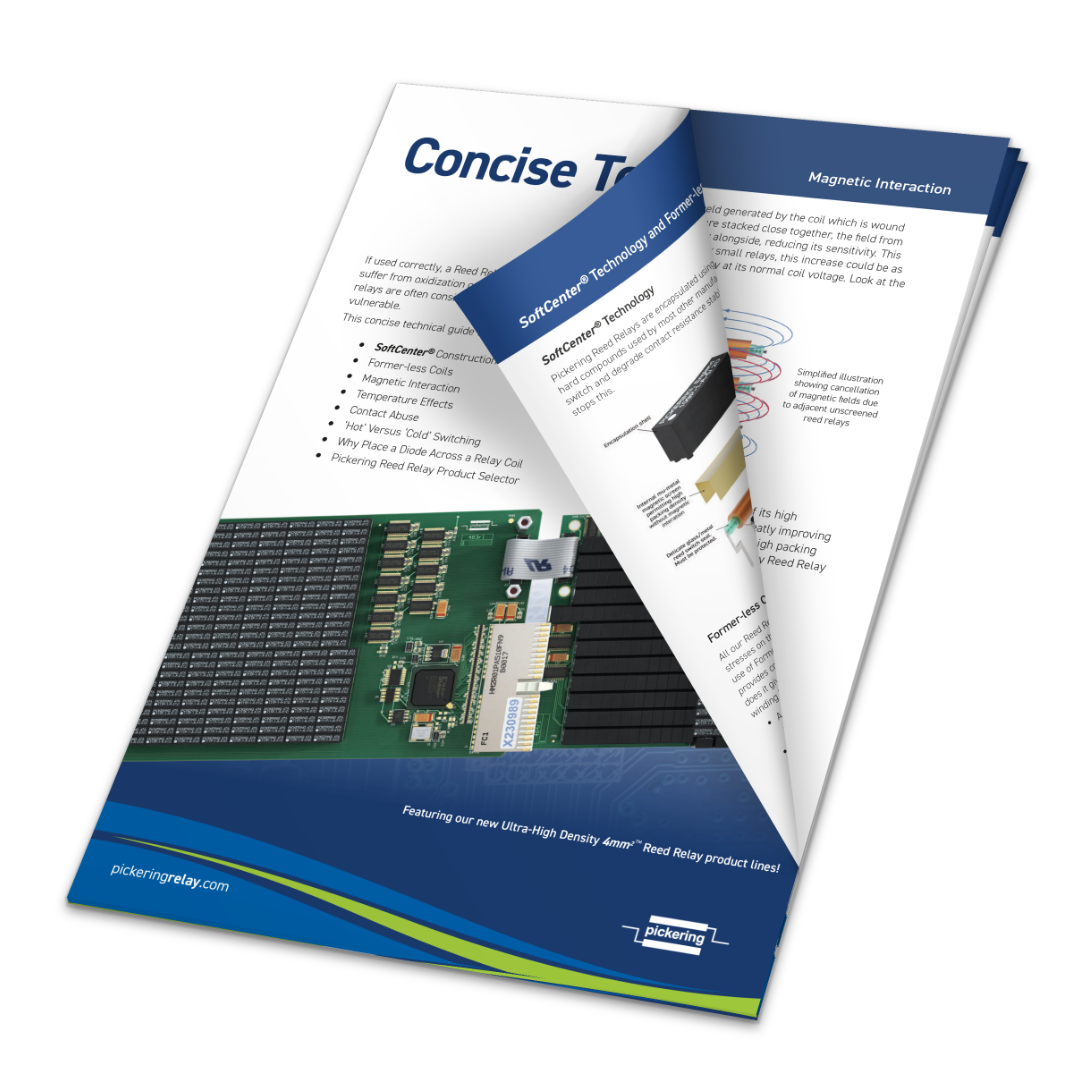WHAT EVERY ENGINEER OUGHT TO KNOW BEFORE USING REED RELAYS
If used correctly, a reed relay is a superbly reliable device, so why do failures occur?
Give us 5 minutes of your time and you will learn:
- A short explanation on what magnetic interaction is and how to steer clear of it
- How temperature can affect reed relays
- What reed switch contact damage is and how to avoid it
- The different ways to switch reed relays, including ‘hot’ and ‘cold’ switching
- Why a diode should be placed across a relay coil
- The benefits of a SoftCenter™ construction and formerless coil winding
This guide will help you understand what a reed relay is, how they are constructed and make best use of them in their applications, allowing you to maximise the reliability of your design.
"Here at Pickering, we have seen customers make many unnecessary mistakes due to lack of reed relay knowledge, which in turn has in some cases cost large Semiconductor companies hundreds of thousands of dollars, just because they hadn’t considered the full effects of hot switching reed relays. If only they had read this guide before using reed relays."
Kevin Mallett, Technical Specialist Pickering Electronics

Unlike most technical guides that become outdated after a few years, this guide is updated regularly to ensure the most up-to-date information is included. Sleep easy in knowing that you are reading the latest innovative guide about reed relays.
Contents include:
- SoftCenter™ Construction
- Former-less Coils
- Magnetic Interaction
- Temperature Effects
- Contact Abuse
- ‘Hot’ Versus ‘Cold’ Switching






